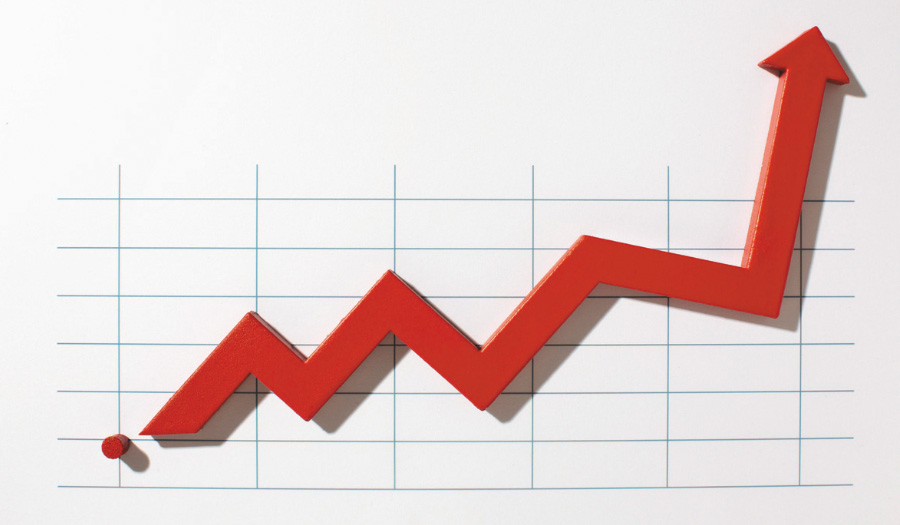Washington (AP) — Held down by sinking gas prices, U.S. inflation was mostly unchanged last month. But underlying price pressures — from apartment rents, restaurant meals, auto insurance and many other services — remained stubbornly high.
Last month’s inflation data arrived just a day before the Federal Reserve will end a two-day policy meeting and announce its latest decisions on interest rates. The Fed is expected on Wednesday to keep its key rate unchanged for the third straight time.
Most economists expect the rate of price increases to keep slowing in the coming months. Though the decline could follow a bumpy path, inflation should fall much closer to the Fed’s 2% target by the end of 2024. Wages and rental prices, among other items, are now increasing more gradually.
In November, much cheaper gas held down overall prices, which rose just 0.1% from October, the government said. Compared with a year ago, inflation dipped to 3.1%, down from a 3.2% year-over-year rise in October.
Prices in the vast service sector, though, still surged uncomfortably fast. Core prices — which exclude volatile food and energy costs and are considered a better guide to the path of inflation — rose 0.3% from October to November, slightly faster than the 0.2% increase the previous month. Measured from a year ago, core prices were up 4%, the same as in October.
WHERE IS INFLATION LIKELY GOING FROM HERE?
America’s consumers will probably continue to feel relief in the form of milder price increases in the coming months. And in some areas, notably the prices of physical goods, many items are actually becoming cheaper rather than just rising more slowly.
Furniture and appliances both dropped in price last month. They’re now cheaper, on average, than they were a year ago. Clothing prices, which fell from October to November, are up just 1.1% from a year earlier. And though used cars jumped 1.6% last month, they’re down 3.8% from a year earlier.
Housing costs, though, were again among the key factors lifting inflation. Rental prices rose 0.5% from October to November and are up 6.9% in the past year. Although those increases are down from recent peaks, they’re still much sharper than they were pre-pandemic.
At the same time, new apartment buildings are flooding the market, and real-time data providers like Zillow and ApartmentList show rent growth for new apartments tumbling. As those prices feed into the government’s measure, they should help cool inflation.
Wage growth, while still rising at a healthy clip, is also cooling. Though they rose 4% last month from a year earlier, according to the November jobs report, that’s down from a peak of nearly 6% nearly two years ago. Slower wage growth should ease inflationary pressures because employers won’t have to raise prices so much to cover their labor costs.
“The main takeaway is we’re on that path towards returning to the Fed’s 2% target,” said Alan Detmeister, an economist at UBS. “But we’re getting there slowly.”
Prices are cooling — or even becoming cheaper — for some of the items that have been leaving the biggest marks on consumers’ budgets. Gas prices, for example, sank 6% just from October to November. From a peak of $5 about a year and a half ago, the national average has dropped to $3.15 a gallon as of Monday, according to AAA.
And grocery prices ticked up just 0.1% in November and are only 1.7% higher than they were a year ago. Bread, beef, chicken and pork prices all dropped.
WHAT DO AMERICANS THINK?
Surveys show that Americans are mostly gloomy about the economy, despite steady job growth, a low unemployment rate and falling inflation. Yet when it comes to consumer prices, their outlook has improved recently.
For example, Americans now foresee inflation rising just 3.4% in the year ahead, according to a survey by the Federal Reserve Bank of New York. That level of expected inflation is nearly back to pre-pandemic levels and is the lowest since the spring of 2021 — down from a peak of 6.8% in June 2022. (Inflation expectations typically exceed the actual inflation figures.)
Lower inflation expectations are important because they are often self-fulfilling. If, for example, Americans expect inflation to rise more quickly, they then typically adjust their own behavior accordingly. Most significantly, they may demand — and receive — higher pay, which would then pressure their employers to raise prices further.
Fed officials have often pointed to low inflation expectations as a reason why they may succeed in pulling off a rare “soft landing,” in which inflation would fall back to 2%, without causing a sharp recession.









